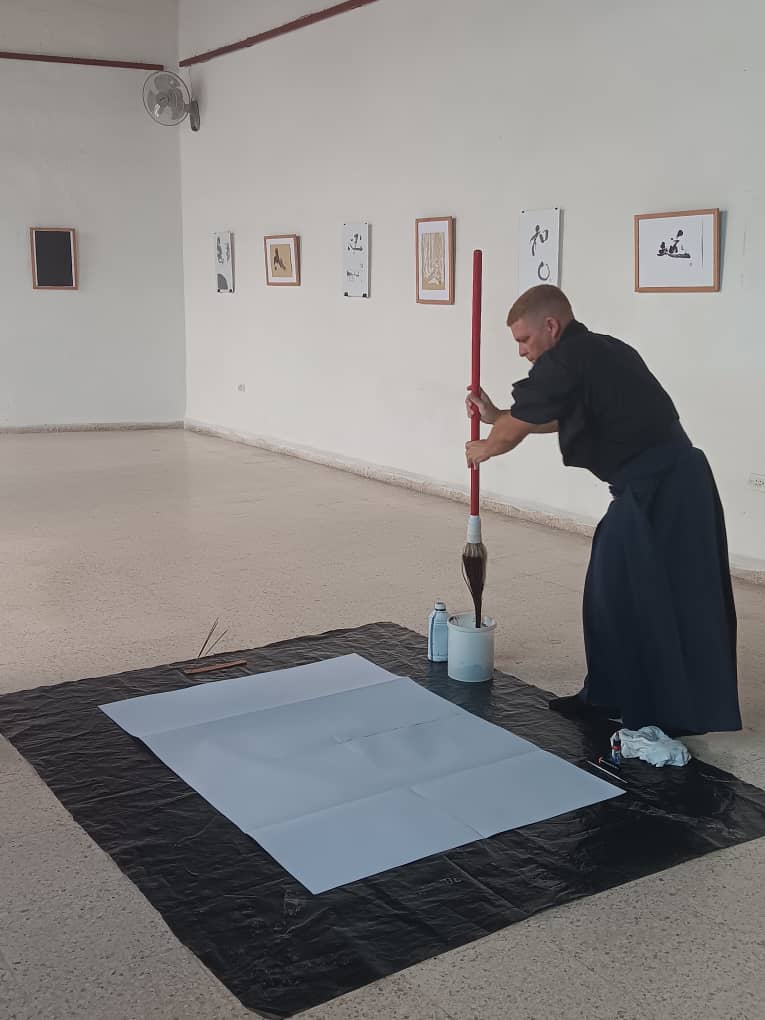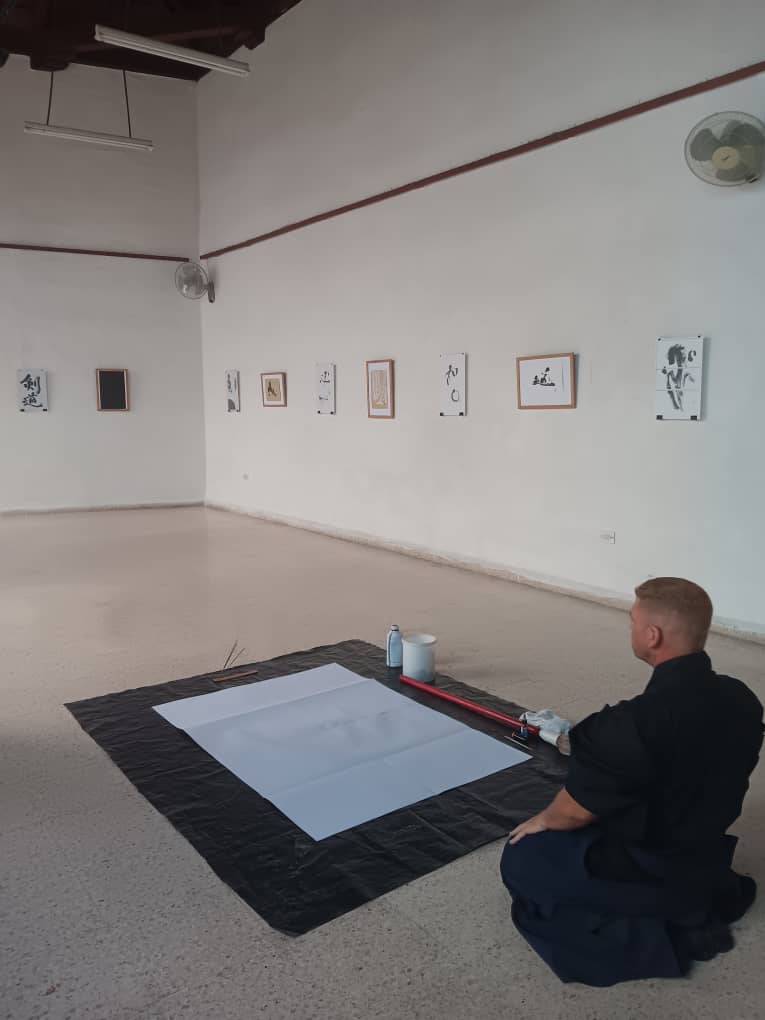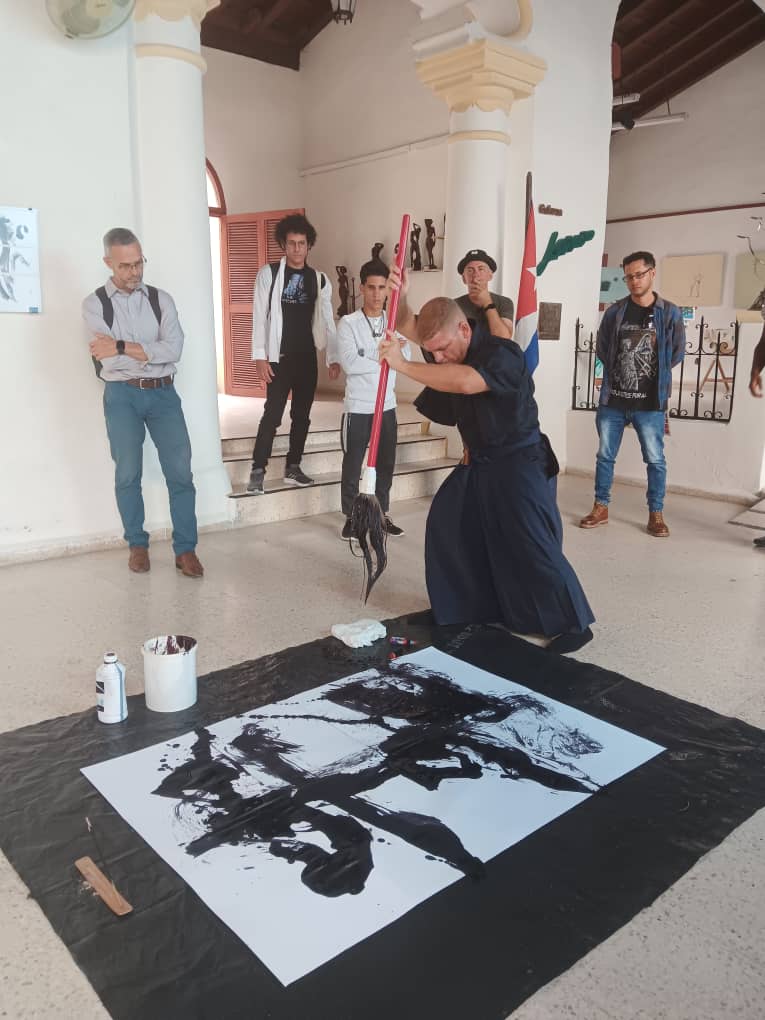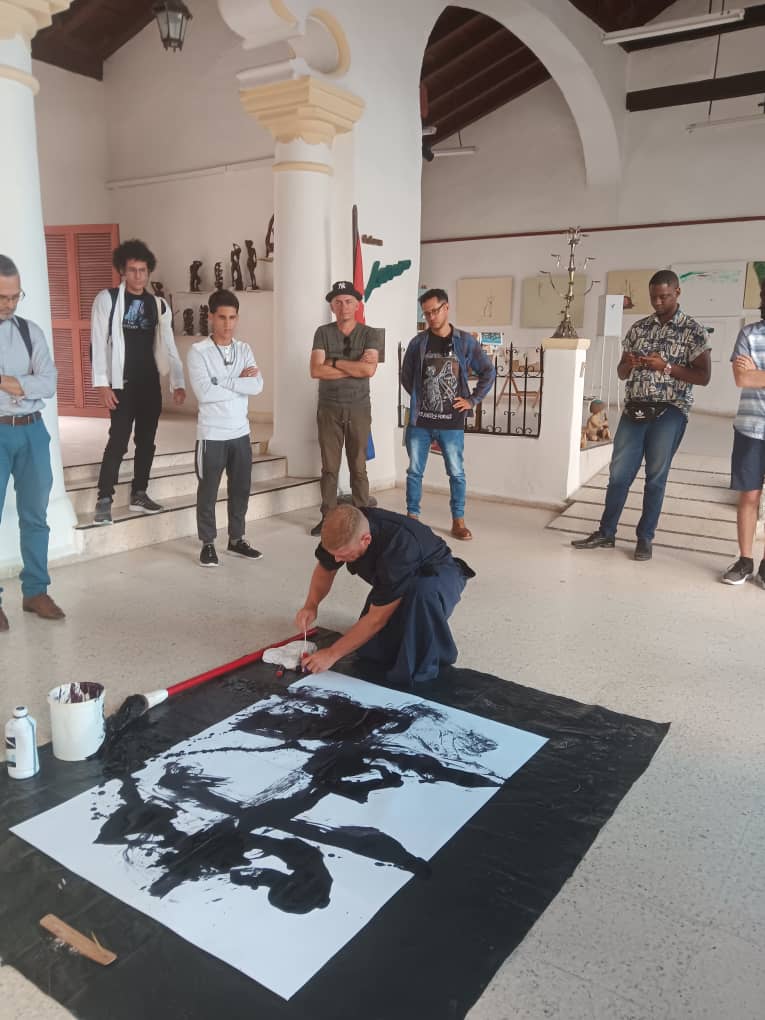CAMAGÜEY.- Japanese calligraphy or shodō is one of the most well-known and popular traditional arts in Asian countries. It is considered a very difficult discipline to perfect and is even taught as a subject to Japanese children in their primary education.
In our hemisphere it is rare to appreciate it, however we Camagüey's inhabitants had the privilege during the 14th edition of the ArteCómic Conference, with the exhibition Acceso de paz, by the visual and martial artist Orlando García Fajardo, museologist of the Ignacio Agramonte Loynaz Provincial Museum.
Shodō practices the writing of Japanese characters hiragana and katakana, as well as kanji (ideograms that have meaning) derived from Chinese culture. In the ancient way, with a brush, an inkwell where the ink is prepared, paperweight and a sheet of paper.
It requires great precision and grace on the part of the calligrapher, since each kanji character must be written according to a specific stroke order.
"It is usually used as a mental exercise, but here we did it in a more artistic way, trying to reach people so that they can identify with or interpret the work," Orlando explained to Adelante.
His exhibition was colored by a performative action in the Larios gallery, where he made a large kanji alluding to peace, plus a series of works in which the shape and strokes are varied in search of a visualization of a work of art.
He classifies this technique as a form of expression, closely linked to manga, since every mangaka is also a calligrapher, due to the elements in common (ink, brush, paper), and resources they use, such as onomatopoeia and loose expressions.
In the conversation he later held with guests and students from the Vicentina de la Torre Academy, he confessed that he has been practicing shodō for 25 years and that his goal is for people to know it as an extremely effective method for mental balance, but also as an art and expression of the human being, through feelings and concepts.
Translated by Linet Acuña Quilez







